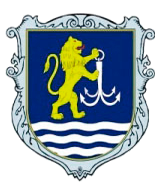CREATION AND RESEARCH OF NEW SCIENTIFIC TECHNOLOGIES TO REDUCE HARMFUL EMISSIONS IN THE EXHAUST GASES OF MARINE DIESELS
Abstract
Introduction. The turbulent development of world transport causes unjustifiable harm to the health of all humanity of the Earth's population. Marine and river transport contributes up to 18% of the total amount of toxic discharges into the atmosphere. Purpose. The main goal of scientific and investigative work of the authors of this article is to reduce waste discharges into the atmosphere of ships of maritime and river transport. The article uses the methodology of the statement of purpose based on the analytical and practical research work. Results. This article analyzes the world's leading technologies for reduction of hazardous emissions in exhaust gases of marine diesel engines, analyzes scientific and research work of the Danube Institute of the National University “Odessa Marine Academy” and NVF “Eco-Auto-Titan”, Ukraine. During the last 6 years on the vessels of the Ukrainian Danube Shipping Company the testing of oil catalyzers of different modifications, products of NVF “Eco-Auto- Titan”, Ukraine under the control of the Ukrainian auditor “Scientific-research Institute “Environment protection and fuel economy”, Kyiv was carried out. The material obtained during examinations of vessels used for water heating had positive results and showed nitrogen oxide NOx reduction by 38%, carbon monoxide COх reduction by 50%, carbon dioxide reduction by 7%, soot emissions by dimmometer measurements decreased by 55%, fuel economy reduced by up to 10%. The cassette-type fuel catalyst itself is a very complex construction. Chemical reagents of different metal oxides, which restructure diesel fuel at molecular level, are built into metal shell of the catalytic converter. The catalyst is installed on flexible links before the high-pressure pump, the catalyst life is 500 tons of fuel before the chemical reagents are replaced in it. Release price of the catalyst depends on the power of the engine, which it is planned for installation and ranges from 400 c.u. (automobile transport), 10 000 c.u. (marine engines up to 3 thousand kW). The article describes technologies of internal combustion engines of automobile, railway, river and sea transport using rosin-based fuels. The analysis of possible use of gas fuel on the vessels of the river fleet of the Ukrainian Danube Shipping Company is given. In more detail the production of water heating with the use of the latest innovative technologies developed in the creation of the latest generation of nuclear reactors is considered, the reactors are successfully integrated into the production chemistry modules to produce hydroplasma in superheated water vapor up to 8000 C. with the production of aqueous and acidic hydrogen. The cost of one liter of water with the use of this technology does not exceed 1.6 с. u, which gives full priority to the production of industrial volumes of water. In spite of the success of water production with the new technology, the authors of the article revealed serious shortcomings in combustion of water in thermal machines (internal combustion engines, gas turbines and boilers). The main disadvantage of water-combustion is the presence of nitrogen oxide N20 in the exhaust gases of thermal machines, which is a greenhouse gas with a high degree of harmful effect on the downdraft. Conclusions. The obtained investigative material of the joint work of the Danube Institute of Scientific and Production Enterprise “OMA” with scientific and production company “Eco-Auto-Titan” Ukraine received its seizure in the internal waterways of Europe. The coal-powered catalyzers began to be purchased: India, Turkey, Kazakhstan. This article contains specific suggestions on the localization of nitrogen oxide during water combustion. It summarizes the experience of using avant-garde technologies on the use of nuclear integrated salt reactors for obtaining industrial water.
Downloads
References
2. Данилян А.Г., Залож В.І., Руденко М.І. Створення нових напрямів зниження шкідливих викидів у газах двигунів внутрішнього згоряння. Вісник ОНМУ. 2017. № 2 (51). 10 с.
3. Данилян А.Г. Програма випробувань паливного каталізатора на портовому буксирі Портовий-22. ДІ НУ «ОМА». Ізмаїл, 2016. 12 с.
4. Програма «Дизель-RК» – сервер МДУ ім. М. Баумана. 2017. 1 тр.
5. Звіт про проведення випробувань на теплоході «Капітан Жидков» / Інститут екології та енергозбереження. Київ, 2017. 54 с.
6. Звіт про проведення випробувань на теплоході «Механік Сінілов» / Інститут екології та енергозбереження. Київ, 2018. 54 с.
7. Conformity test certificate, company Enggsol Engineering India. 2019. 1 p.
8. Данилян А.Г. Звіт про науково-дослідну роботу з випробування каталізатора паливного НВФ «Еко-Авто-Титан», Україна / Дунайський НУ «ОМА». Ізмаїл, 2020. 32 с.
9. Матеріали засідання Міжнародної Дунайської комісії щодо впровадження паливного каталізатора «Еко-Авто-Титан», Україна на річкові судна. Будапешт, 2016. 11 с.
10. Засідання робочої групи Дунайської комісії з технічних питань (12–15 жовтня 2021 р.): Розділ II.3 попереднього порядку денного: «Модернізація флоту та заходи щодо скорочення забруднення повітря від внутрішнього судноплавства». Будапешт, 2021. 32 с.
11. Протокол засідання Ради УДП про модернізацію річкового флоту (34 буксира-штовхача) із заміною двигунів компанії АВС на Кілійському суднобудівному-судноремонтному заводі. Ізмаїл, 2021. 12 с.
12. Морському транспорту настав час включитися в боротьбу зі зміною клімату, вважають в ООН. Женева, 2019. 5 с. URL: www. news.un.org (дата звернення: 26.09.2021).
13. Аналітичний документ Європейський зелений курс. Формування майбутнього східного партнерства / Ресурсно-аналітичний центр «Суспільство та навколишнє середовище». Київ, 2020. 64 с.
14. Радченко Р.В., Мокрушин А.С., Тюльпа В.В. Водень в енергетиці / Уральський університет. Єкатеринбург, 2014. 229 с.
15. Гавриленко Г. Водневі сюрпризи. Київ, 2021. 8 с.





